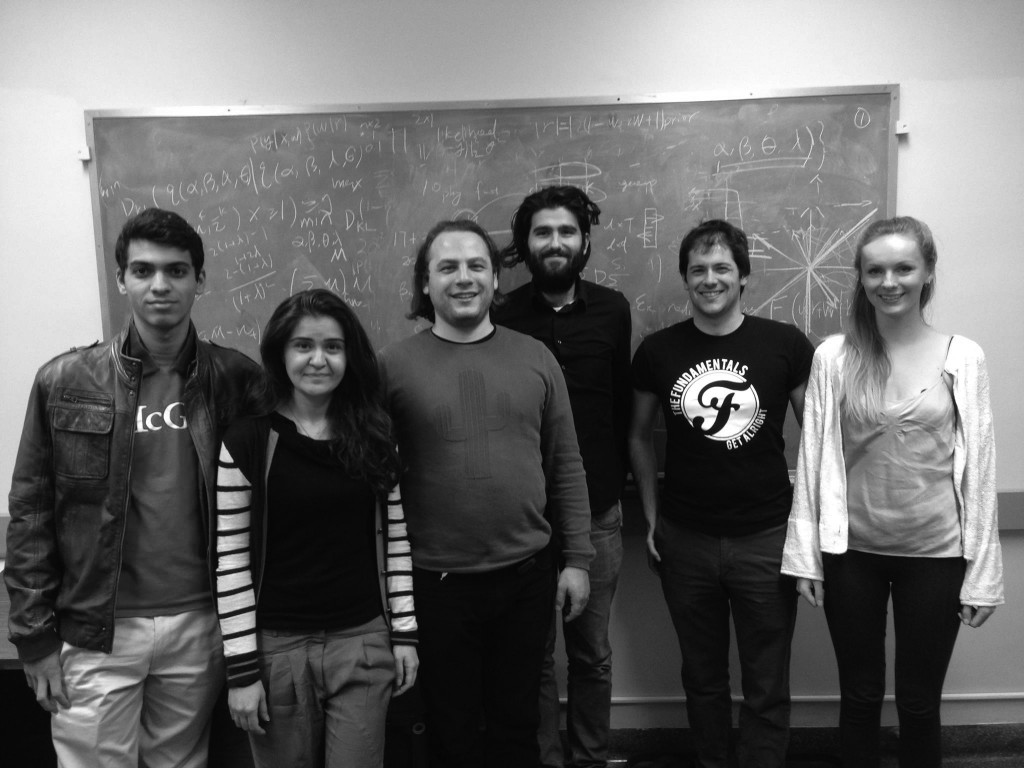In the worldwide race to find the next must-use mobile app, “there’s an app for that” is one of the most common refrains heard today. Backtrack is the scientific foray into the mobile app world for McGill graduates Alex Danco and Alex Daskalov. The app, which is in its developing stages as it seeks $50,000 through Kickstarter, aims to help users visualize their back movement and track that progress through the app.
The system uses a sensor shaped like a two-pronged stick roughly the size of a hand, which the user can secure onto his or her back using a disposable adhesive patch. Backtrack uses inertial measurement unit (IMU) sensors to detect position and shape; the information is then sent to the user’s phone via Bluetooth. The app then lets the user track movement and range on a 360-degree map, both of which can be tracked on a daily basis.
According to Dr. Ladan Mahabadi, a collaborator on Backtrack, the purpose of the app is to give patients with back problems an accessible way to recover.
“The idea was that when you go to your physiotherapist, it’s very short-term […] and the expectation [is] that you would actually maintain doing the exercises [at home,]” she said. “Back pain is one of those things where recovery and improvement happens over a long period of time […] so patients [can] get discouraged. [Danco and Daskalov] figured out that the best way to remedy this would be to show the patient how much they’re recovering over time [….] We’re focusing on telling you [the exact] variation on your range of movement, the complexity of your movement, and the dexterity of your movement.”
The Kickstarter also offers Hacktrack, an open API device, which is a tool used to build software that can be used by developers who want to track changes in shape by other companies that may want to target other parts of the body.
“We built a shape sensor and we showed it to a lot of people,” Daskalov said. “But when we saw that people were excited about that as a novel sensor, we figured we should offer it to others to see what other applications [it may have.]”
Mahabadi noted that Backtrack is different from other apps in its focus and the features it offers.
“[The aim is] to redefine recovery as a personal achievement of milestones,” Mahabadi said. “I’m not comparing my movement to yours, but I want to know how my movement today compares to days before. Machine learning is this tool that looks at the data collective for a particular individual […] and quantifies your recovery for you over various periods of time.”
According to Backtrack’s Kickstarter, the initial stages of development involved many broken prototypes due to cracked electrical connections, which caused the team to subsequently change the circuits and device design in order to avoid those issues.
However, Backtrack is still undergoing adjustments before it will be ready for shipping and distribution. The team is currently working on the sensor’s size, contouring, and application methods as it seeks universality in the sensor’s wear and use. The goal is to make the sensor as thin and unobtrusive as possible.
Daskalov added that the team is currently working on presenting the product to universities and clinics, rather than individual customers to see direct effects on patients.
“The device is not something we intend to sell directly to consumers,” Daskalov said. “We already started a number of partnerships with various universities, like Concordia [….] We will start working with various physiotherapy clinics to see how we can actually apply this to patients and see their improvement.”
Mahabadi also stated that back pain is a prevalent and cumbersome problem that many people face, which was why the team sought to tackle the issue.
“It’s both the sheer number of people that suffer from back pain, and the false hypothesis that back pain is so big and so unquantifiable, that attacking the problem is almost impossible,” she said. “The burden of improvement is on the patient, and the reason a lot of people don’t improve is because they stop the exercises that would help them.”
According to Mahabadi, the Backtrack team hopes to see the product not only used for back rehabilitation, but also in other medical applications.
“I’m hoping that we can get other collaborators involved,” Mahabadi said. “What would be fantastic would be to get these in neurodegenerative applications [like for] ALS or Parkinson’s. I believe that our techniques can actually detect those critical episodes.”









